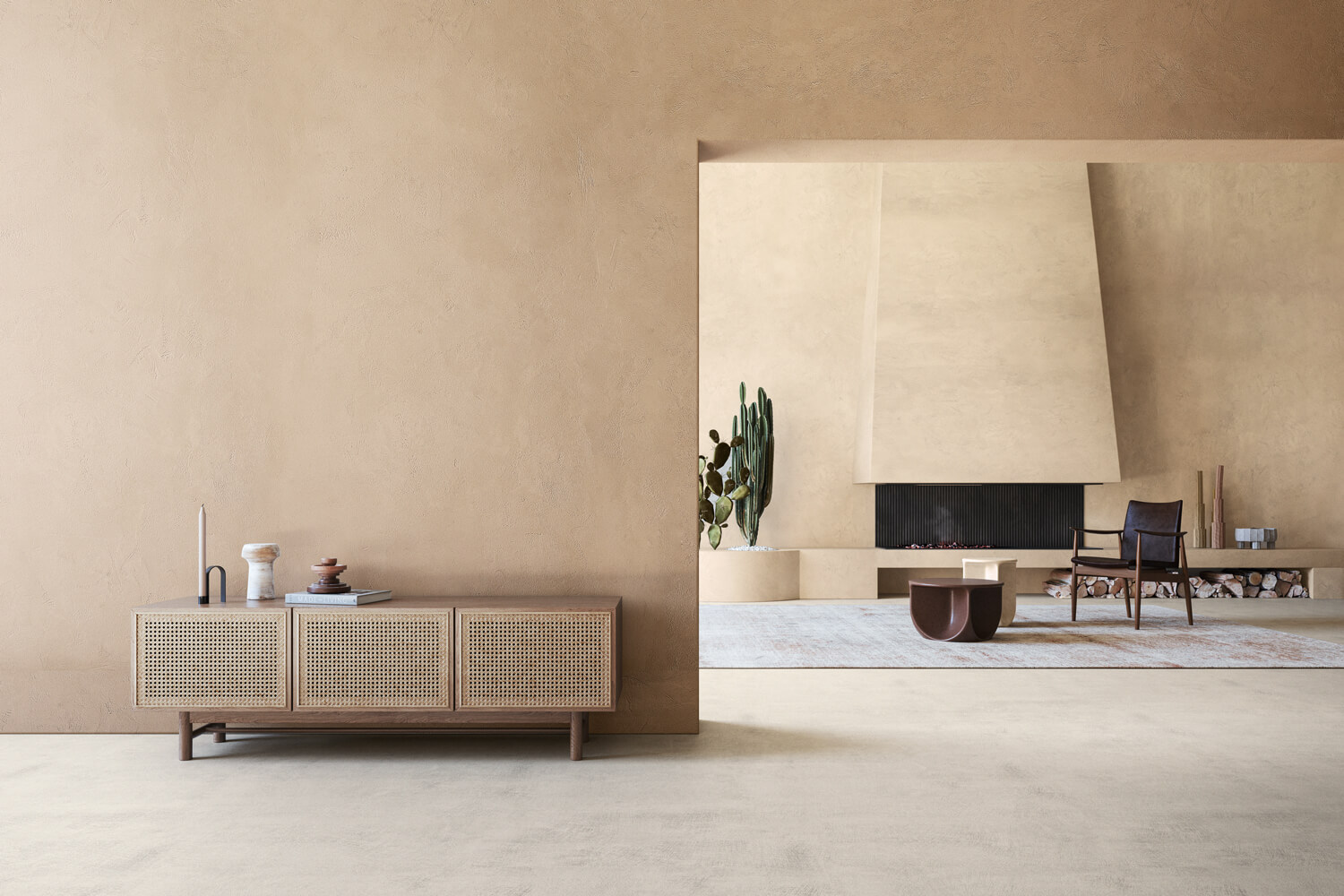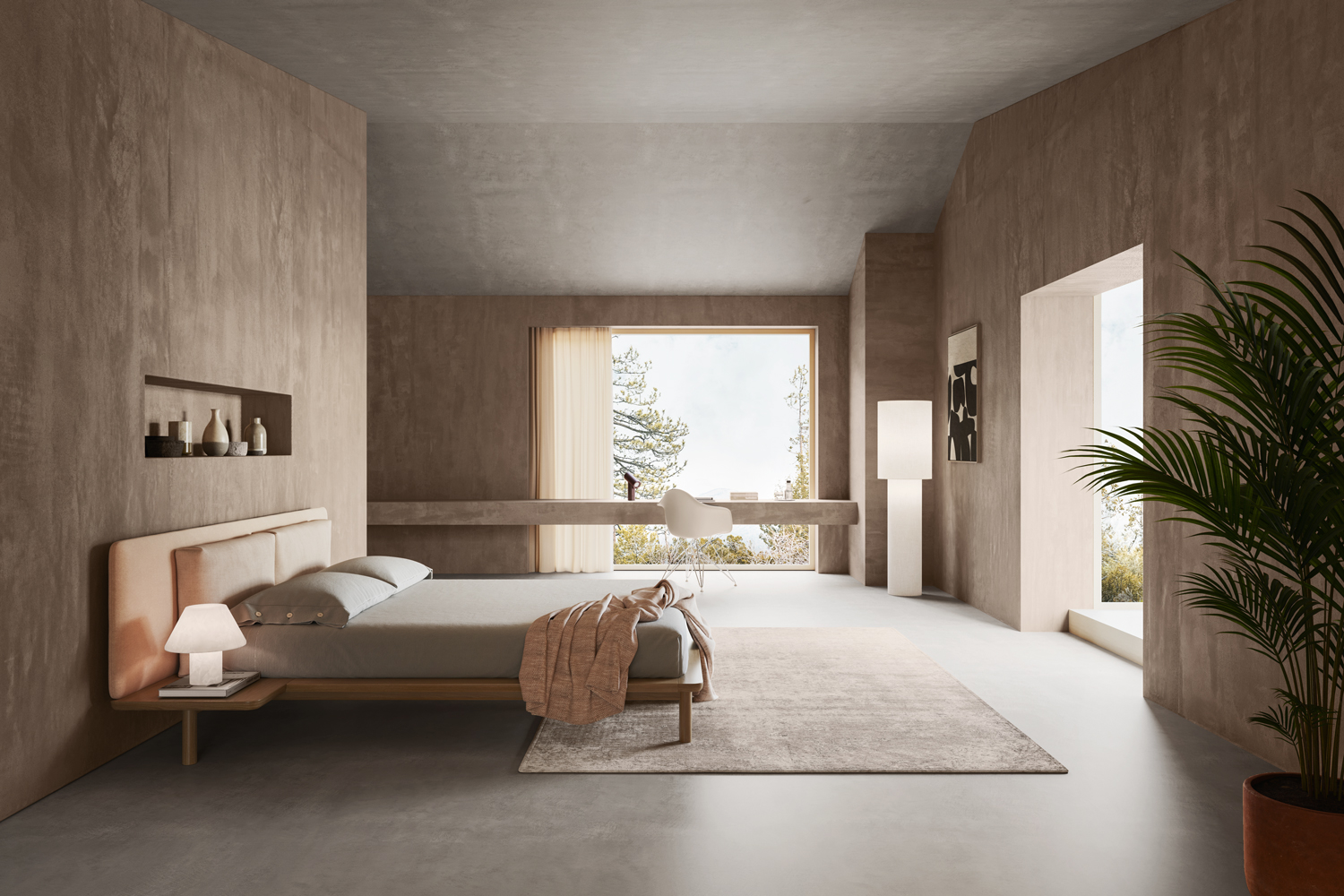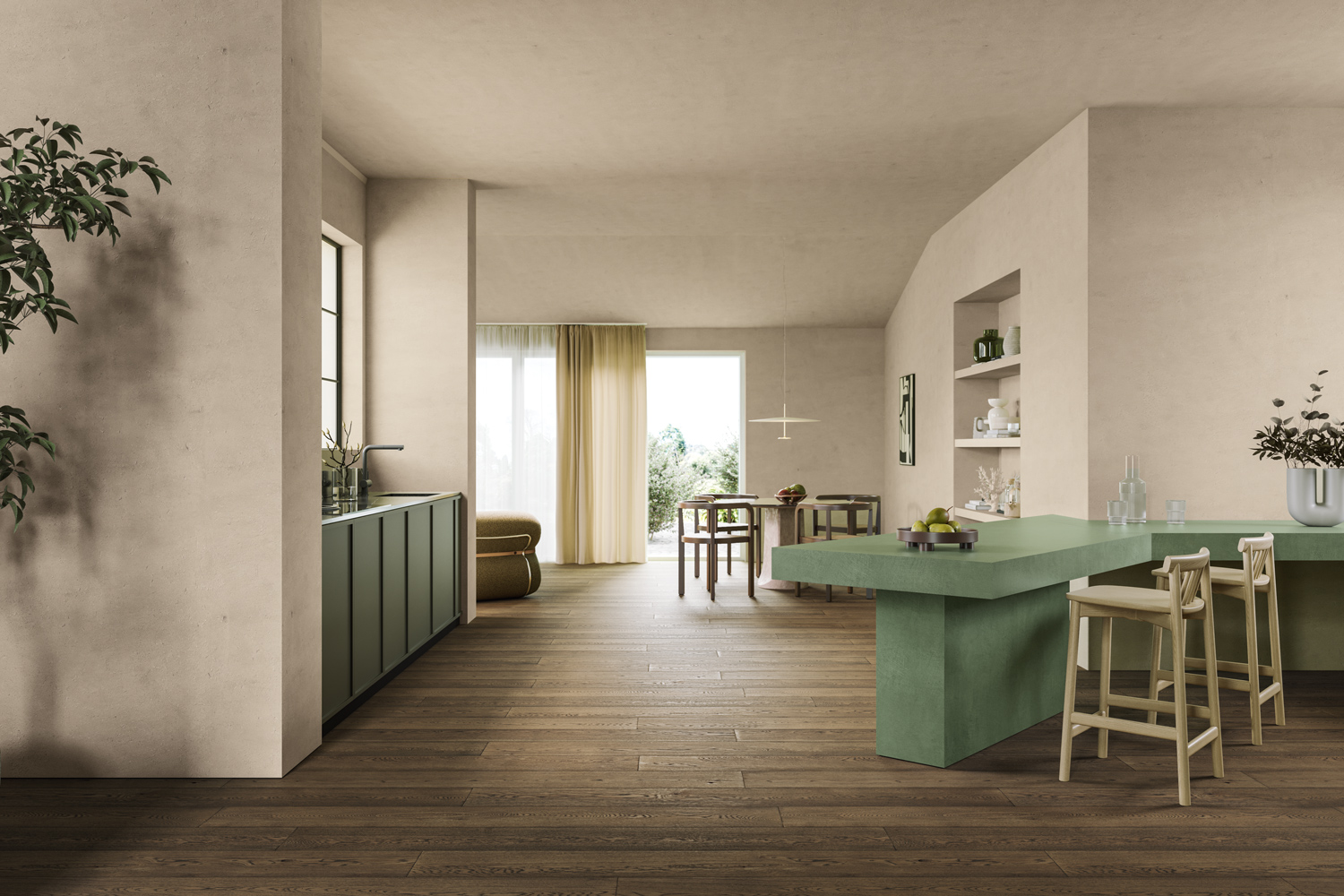In the world of interior design, attention to detail is essential to create welcoming, functional and healthy spaces.
An often overlooked yet important aspect to take into account is the breathability of the materials used in interior environments. But what exactly is breathability and why is it so important for our well-being?
What is breathability?
Breathability refers to a material’s ability to let air pass through and regulate water vapor, allowing moisture to dissipate naturally. This helps prevent condensation, mould, and other problems related to excess humidity in indoor environments. On a practical level, breathable materials allow air and water vapour to flow freely, without barriers that could compromise the healthiness of the space.

The importance of breathability in indoor environments
Indoor environments should be designed not only to be aesthetically pleasing, but also to ensure maximum comfort and well-being for those who live there. One of the main factors that influence the quality of air inside enclosed spaces is the ability to control the humidity level. Environments with too high a humidity level can lead to a number of problems, including the following.
– Mould and mildew: In a poorly breathable environment, moisture can accumulate on surfaces, creating the ideal breeding ground for mould and mildew. Not only are these microorganisms unsightly, but they can also pose a health risk, especially for those who suffer from allergies or respiratory problems.
– Bad odours: Stagnant humidity can generate bad odours, which often come from the proliferation of bacteria and mould.
– Material deterioration: materials such as wood, if exposed to excessive humidity, can warp, swell or even rot. Wall coverings or floors can also suffer irreversible damage.
– Poor air quality: A non-breathable environment can drastically reduce the quality of indoor air, causing an increase in the concentration of pollutants, such as carbon monoxide, formaldehyde and other chemicals from paints, glues and furniture.
Breathable materials: which to choose and why
To ensure adequate breathability in indoor environments, it is necessary to carefully select the materials for building and covering surfaces. Here are some of the most used and recommended to obtain a healthy and comfortable environment.
1. Natural plasters
Plasters made from natural materials, such as lime or clay, are perfect for walls and ceilings. These materials allow surfaces to breathe constantly, preventing moisture from building up. Lime-based plaster, for example, has hygroscopic properties, meaning it absorbs and releases moisture based on environmental conditions, thus maintaining a healthy balance.

2. Ecological paints
Paints can also affect the breathability of walls.
Eco-friendly paints made from natural ingredients, such as casein or potassium silicate, are designed not to clog the pores of the wall, allowing air and vapour to pass through freely. These paints, in addition to being breathable, are free of VOCs (volatile organic compounds), which helps to improve indoor air quality.
3. Solid wood
Solid wood is highly breathable and hygroscopic. It contributes to regulating the humidity of the surrounding environment, absorbing it when it is too high and releasing it when the air is too dry.

4. Natural fibres
For fabrics and furnishings, opting for natural fibres such as cotton, linen, or hemp can improve the overall breathability of the environment. These materials allow for good air circulation and do not trap moisture, which makes them ideal for curtains, rugs, and furniture coverings.
How to ensure proper breathability
To ensure that your home or office is a healthy environment, it is important not only to choose breathable materials, but also to adopt some practices that promote proper air circulation and humidity management.
1. Regular airing
Opening windows daily, even for just a few minutes, can help renew the air and reduce excess humidity. In the case of rooms without windows or with little ventilation, installing a controlled mechanical ventilation system (CMV) can be an effective solution.
2. Dehumidifiers and humidifiers
Depending on your climate, using a dehumidifier or humidifier can help keep indoor humidity at an optimal level, usually between 40% and 60%. This reduces the risk of mould and improves overall comfort.
3. Houseplants
Plants can play an important role in improving indoor air quality. Some plants, such as Ficus, Sansevieria, or Pothos, not only purify the air, but also help regulate indoor humidity through their transpiration process.

The role of breathability in energy saving
Another often overlooked benefit of breathable materials is their impact on energy savings. In a well-ventilated and breathable environment, temperature management becomes more efficient. Lime materials, in addition to being breathable, have a high thermal capacity, which means they can accumulate heat and release it gradually, helping to maintain a constant internal temperature. This reduces the need for heating or cooling, resulting in energy savings and a lower environmental impact.
Ideal Work’s wall coverings
At Ideal Work we try to pay the utmost attention to the aspects so far described, which is why we offer a range of products that not only enhance the appearance of interior environments, but also ensure high breathability. The products of the Terrae Calce collection stand out for their natural properties that contribute to creating healthy and comfortable spaces.
– Terrae Calce Matera is a natural lime-based coating whose composition allows optimal transpiration of surfaces. This finish is ideal for those who want to prevent the formation of mould and improve the quality of indoor air while maintaining a refined and contemporary aesthetic.
– Terrae Calce Siena offers a versatile and decorative solution for internal walls, with the added benefit of helping to maintain a healthy microclimate. Its lime-based formula allows for natural regulation of humidity, avoiding build-ups that could compromise the healthiness of the space.
– Terrae Calce Venezia combines elegance with functionality. In addition to giving the interior an artistic touch, this finish supports perfect breathability, reducing the risk of condensation and promoting the dissipation of excess humidity.

The advantages of Ideal Work solutions
By choosing any of Ideal Work’s Terrae Calce solutions, you will obtain a product of high aesthetic quality, which also actively contributes to the well-being of the environment. The breathability of lime coatings allows to maintain an optimal level of humidity, preventing common problems of condensation and mould. This translates into greater durability of the surfaces and an improvement in the quality of internal air, which is essential for the health of those who live in those spaces.